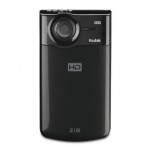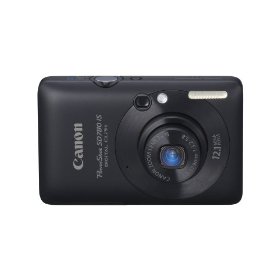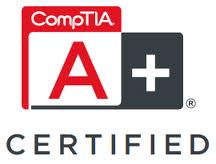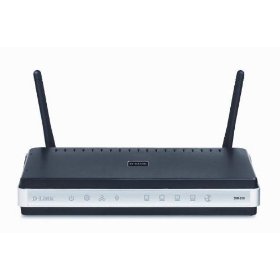October 28, 2009 at 12:25 pm
Hello everyone,
As I promised in my post yesterday I have not forgotten about the pocket sized dedicated camcorders. How could I? In part thanks to incredible convenience and quality (remember the still photos are poor), and in greater part to YouTube (more than 30,000 hours of video footage uploaded to YouTube each day!), ultracompact video camcorders built for easily sharing clips on the web have become the rage. Kids love pocket size HD!
Today I would like to tell you about the two that I recommend the Flip UltraHD (you may also want to check out the Flip MinoHD 2nd generation – very nice, smaller, more expensive) and the Kodak Zi8 HD. I’m not going to do an exhaustive product review just highlight some of the differences between each and point out what I think you need to know if you are thinking about purchasing one of these very useful pocket camcorders.
The Flip UltraHD 
1) Great 720p video (smoother video in action shots than 1080p).
2) Internal Microphone (no external mic can be attached). Flip UltraHD 3rd. Generation has the capability of attaching an external microphone using FlipPort.
3) Limited Memory (the memory is built in: 120 minutes on the 8 GB hard drive – you can’t add more).
4) HDMI output (connect to your HDTV and enjoy the high definition video).
5) Rechargeable AA battery pack (recharges when connected to USB), but also supported by standard AA batteries (if you are not near a wall outlet- no problem, just change the batteries and you’re good to go).
6) No image stabilization (so keep your hand steady when filming). Flip UltraHD 3rd. Generation has a basic image stabilization feature.
7) Pre-installed FlipShare software lets you easily email videos, edit individual clips, make custom movies, capture still photos from video, and even upload video to sharing sites like YouTube and MySpace.
The Kodak Zi8 HD 
1) Great 720p & 1080p video (1080p is great if there isn’t much movement in what you’re shooting – don’t put 1080p on the internet, the file size is too large).
2) External Microphone Jack (can attach external mic and record in stereo).
3) Less Limited Memory (SD card for memory, limited only by the size of the SD card).
4) HDMI output (connect to your HDTV and enjoy the high definition video).
5) Rechargeable battery pack (recharges only to a wall outlet not USB), does not support standard batteries (you need to have another charged battery pack).
6) Image stabilization (it’s not great but it is better than nothing).
7) Easily edit and share videos and upload recorded footage to YouTube with built-in USB and software.
Professor Randy says: Price and video quality being equal, I’d go with the Kodak Zi8 for it’s external microphone jack, almost unlimited memory, and basic image stabilization! Please see updates #2, #6 concerning the Flip UltraHD 3rd. generation.
October 27, 2009 at 12:26 pm
 Hello everyone,
Hello everyone,
I love to shoot good video but many times I don’t because I simply don’t have my camcorder with me. I also love to shoot quality still photos but many times I don’t because I simply don’t have my camera with me. Do you see a pattern here? The biggest problem is actually having both camcorder and camera with you!
I’m a bit older so I still remember those over sized, monster, and outdated camcorders that recorded to VHS, SVHS, VHSc, SVHSc, Hi8, Betamax, Digital8, DVCam, 8mm video tape and Beta tapes. You had to lug the thing around in a huge case. Not only that – in another huge case you had to carry your Single Lens Reflex camera in order to take a still photo.
Nowadays I don’t have much of a size/quality excuse because modern technology has produced incredible, extremely small, and even pocket sized HD camcorders as well as tiny digital point & shoot cameras for still photos. The video quality from the camcorders is suberb (720p/1080p) and the image quality from the digital still cameras is phenomenal (very high resolution photos).
But I still have the same old problem – I don’t always have them both with me!! So today I want to tell you what I think is a great solution: TAKE BOTH CAMCORDER AND CAMERA IN ONE DEVICE!!! Profound right? Why carry around a dedicated camcorder? Why bring both camcorder and camera? Forget the camcorder!
The new digital cameras shoot HD video and take great still photos. Just think – a great, super small point & shoot camera + 720p high definition video fitting in the palm of your hand. It’s a “no brainer” and even more so when you consider the inexpensive price!! My camera of choice is the Canon Power Shot SD780IS. I’ll not go into a product review here but if you are interested you can check it out at http://digitalcamerainfo.com – the Power Shot SD780IS is absolutely incredible.
Just in case your wondering, I have not forgotten about the pocket sized dedicated camcorders like the Flip UltraHD and the Kodak Zi8 (the two that I recommend – they both take quite good HD video but have poor image stabilization and the still photos are very poor). I think I’ll talk more about them tomorrow
Professor Randy says: Why carry around both camcorder and camera? Forget the camcorder! Take high definition video and high resolution still photos by just using the camera alone!
October 26, 2009 at 10:19 am
 Hello everyone,
Hello everyone,
As you can see by my content and name of my blog, I am a technology “teacher”. I love all things “tech” and I love to teach, so the choice was a “no brainer”. Any tech information and “know how” that I have amassed has come through self study and personal practice. Because of my interest I have investigated, observed, and acted.
Just recently I have decided to get some formal training. At the moment I’m studying for the CompTIA A+ Certification (indicates a solid competency as a PC technician) and I will then go on to study for the CompTIA Network+ Certification (demonstrates skill as a network technician, including understanding of network hardware, installation, and troubleshooting). The CompTIA (Computing Technology Industry Association) is the IT industry’s largest developer of vendor-neutral IT certification exams.
I’m not real excited about all of the studying that I’m doing because I obviously think that real life experience is much more valuable, but how important is formal training (degrees,certifications,etc.)? Do you have degrees or certifications in your chosen field? Were they the most important factor in your acquisition of professional expertise? Is formal training a waste of time and money? Here are some quotes from others in the tech field.
“Real techies don’t care about certifications, they care about your actual knowledge and skills. But, depending on the company and hiring manager (or whomever), the certification could make the difference in whether a techie even ever sees your resume”
“You cannot write the certs off as worthless, but without experience on your resume, they will not get you very far. I tried to break into IT with certifications but no experience, and I had much trouble getting interviews. But, I think I would have had even more trouble had I no certs and no experience”.
Ed Tittle (a well known IT consultant): “If the work you do, or envision doing, involves troubleshooting or supporting desktop PCs or their users, then A+, still makes as much sense as it ever did – which is to say “quite a lot”. I also agree that for those whose job responsibilities or interests fall outside of bench tech, PC service tech, tech support professional, PC or user support tech, etc. the A+ is probably of limited value at best”.
Professor Randy says: Formal Training is beneficial only when coupled with Practical Experience and Real Life Application!!
Tags:
compTIA A+,
computer repair certification,
IT certification exams
October 22, 2009 at 12:28 pm
 Hello everyone,
Hello everyone,
Today I’m giving you an article by Woody Leonhard because he says it with great experience. I have been going to Woody’s site (http://www.askwoody.com) and reading his “Dummies” books for years and he really knows his stuff. I would put him right up there with Microsoft gurus Ed Bott, Paul Thurrott, and Mary-Jo Foley. His writings are entertaining and very easy to understand/digest.
Woody writes:
As I write this it’s 7:00 in the morning, October 22. Phuket’s a little bit ahead of most of you.
Windows 7 is officially out, and I for one am thrilled. Not because of the marketing hype. But because the general public now has access to this piece of software I’ve been writing about – and marveling over – since early this year.
Windows 7 is phenomenal. I’ll go into much more detail in my Windows Secrets Newsletter articles, but the bottom line couldn’t be more clear. Unless you’re running a laptop that’s more than three or four years old, or a desktop that’s more than five or six years old, or you’re stuck with an older piece of hardware or software that won’t work with Vista or Win7, you owe it to yourself to check out Windows 7.
UPDATE: TechRadar quotes the Amazon UK Managing Director as saying, “The launch of Windows 7 has superseded everyone’s expectations, storming ahead of Harry Potter and the Deathly Hallows as the biggest grossing pre-order product of all-time at Amazon.co.uk, and demand is still going strong”.
Professor Randy says: Get Windows 7 and get to know Woody Leonhard and his tech writings.
October 21, 2009 at 2:39 pm
 Hello everyone,
Hello everyone,
Wireless networking means freedom from cables and wires!! A wireless router is a network device that performs the function of directing and forwarding information and it does this using radio waves without the need for a cabled connection. How cool is that?
Thats not all. A wireless router also (and more importantly in my opinion) performs the security function of a hardware firewall which blocks unauthorized access to your computer or network (while allowing of course authorized access). How cool is that?
Today I want to tell you how to set up and optimize your router so that you can wirelessly enjoy the internet and be protected at the same time. If you don’t secure your system, someone with the right tools will be able to break into (“hack into”) your computer.
A) Buy a router that supports the 802.11n standard (the latest and greatest Wi-Fi certified version). 802.11n will give you faster data speed and a wider range. The brand doesn’t matter much: D-Link, Belkin, Linksys are all about the same.
B) Hook up the router and go into the routers configuration page (enter your routers default IP address (such as 192.168.1.1) into your web browser .
C) Now that you are in the routers configuration page do the following five things:
1) Re-name the router (don’t name it Belkin or Linksys or D-Link). Give it a personal name that means something to you and that you will remember.
2) Change the default password (usually the default password is “admin”). Many people know this and can break into your router using the default password.
3) Turn off WAN (Wide Area Network) administration. On some routers WAN administration is called Internet Administration. You don’t want to cover a broad area just your personal area (room, office or building).
4) Turn on encryption (use only WPA2 encryption – it is much harder to crack – use a strong password for the WPA2 encryption (like a sentence that you will remember with numbers, capital and small letters).
5) Turn off Universal Plug and Play (UPnP). UPnP opens you up to being attacked and possibly controlled by a malicious website.
Professor Randy says: Enjoy the freedom of going wireless – but be safe! Buy a wireless router and configure it properly as mentioned above.





 Hello everyone,
Hello everyone, Hello everyone,
Hello everyone,

